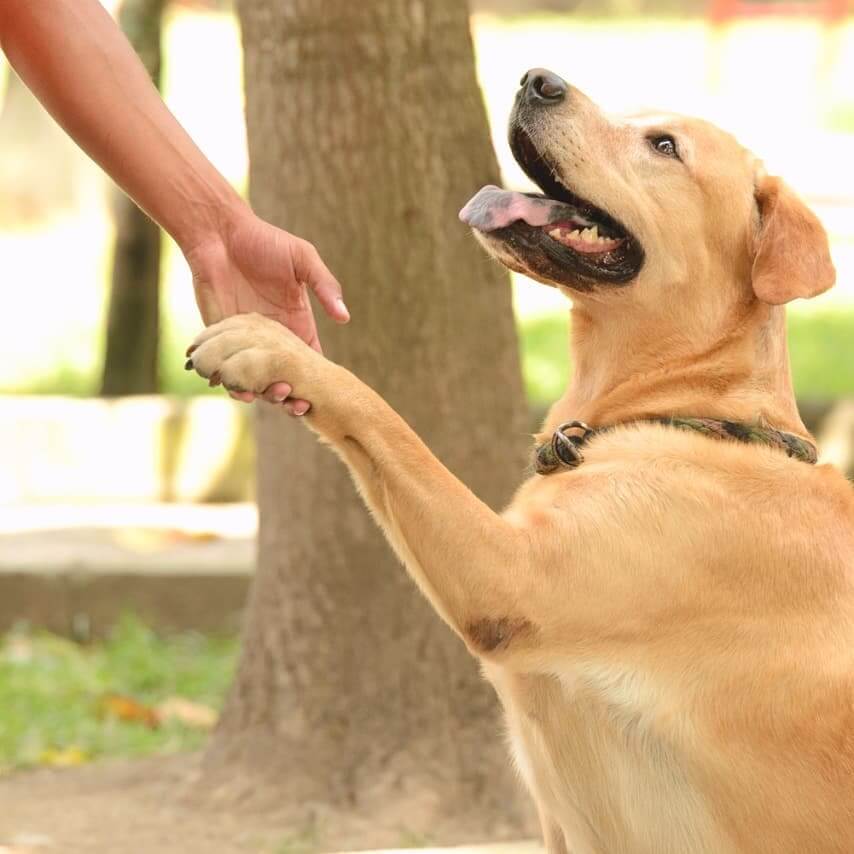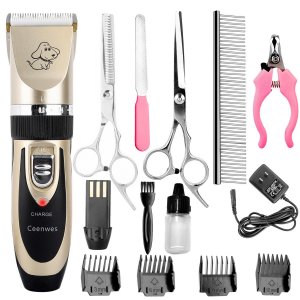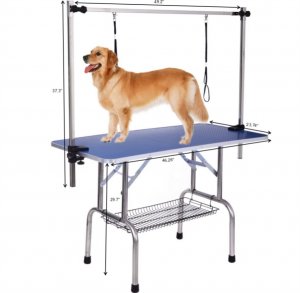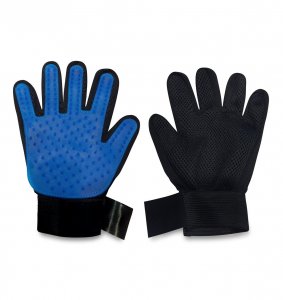The Labrador retriever is just Labrador or one kind of the retriever-gun dog that originated in the USA and Canada. According to the American Kennel Club, the Labrador Retriever has consistently ranked as the most popular number one purebred dog in the United States for more than 10 years.
Labrador Retriever content overview
- History
- Different names
- Appearance and Characteristics
- Personality and Temperament
- Health & problems
- How to take care
- Puppy Information
- Puppy price
- Things to consider adopting a puppy
- Advantages & Disadvantages
- Photo gallery
History of Labrador Retriever
The Labrador Retriever originated on Newfoundland’s coast, where fishers used a dog of similar appearance to retrieve fish. The Labrador Retriever originally came from Newfoundland, Canada, and was known as the “St. John’s Dog”, “St. John’s Newfoundland”, or “Lesser Newfoundland.”
They were used to retrieve prey that the English hunters brought down! These Englishmen inhabited the St. John’s area of Newfoundland. These hunters were responsible for bringing the dogs to England through the Poole Harbor of Dorset, which was the center of Newfoundland’s fishing trade.
These are some of the reasons you might find the Labrador Retriever referred to by the following names too!
- Black Water Dog
- English Labrador
- English Retriever
- Labrador Dog
- Lesser Labrador
- Lesser Newfoundland Dog
- Little Newfoundlander
- Lesser St. John’s Dog
- Newfoundland Dog
- Newfoundland Water Dog
- Smaller Labrador
- St. John’s Dog
- St. John’s Labrador Dog
In 1830, a British Sportsman named Colonel Hawker described the dogs as “the best for any shooting. The breed began to grow in popularity. In the early 1900s, hunters and farmers from the United States learned of the breed’s work ethic and began incorporating “Labs” into their daily lives
The first registration of Labradors by AKC was in 1917. From the 1920s through the 1930s, a significant influx of British dogs formed the backbone of breed in this country.
Different names or Types
All names
- Lab
- Labrador
- Black Labrador Retriever
- Yellow Labrador Retriever
- Chocolate Labrador Retriever
- Silver Labrador Retriever
Recognized Names

Recognition
- American Kennel Club – AKC
- American Canine Association Inc – ACA
- Canadian Kennel Club – CKC
- American Canine Registry – ACR
- Continental Kennel Club – CKC
- Australian National Kennel Club – ANKC
- American Pet Registry, Inc – APRI
- Dog Registry of America, Inc – DRA
- Canadian Canine Registry – CCR
- United Kennel Club – UKC
- New Zealand Kennel Club – NZKC
- National Kennel Club – NKC
- Fédération Cynologique Internationale – FCI
- Kennel Club of Great Britain – KCGB
- North American Purebred Registry, Inc – NAPR
Appearance & Characteristics
The Labrador Retriever is a strongly built, medium-sized, short-coupled dog possessing a sound, athletic, well-balanced conformation that enables it to function as a retrieving gun dog.
Breed basic characteristics
| Origin | United Kingdom & Canada |
| Group | Gun Dog, AKC Sporting |
| Size: | Medium-sized |
| Lifespan: | 10-12 years |
| Trainability: | Eager To Please |
| Exercise Needs: | Extremely High |
| Grooming: | Occasional |
| Barking: | Barks When Necessary |
| Shedding: | Seasonal |
| Protective Ability: | Good with Kids |
| Brushing: | Brushed regularly |
| Hypoallergenic Breed: | No |
| Space Requirements: | Gardens and yards |
| Compatibility With Other Pets: | Good |
| Average Puppy Price: | $800 to $1200 |
| Height | 22.5-24.5 inches (male), 21.5-23.5 inches (female) |
| Weight | Male: 65–80 lb, Female: 55–70 lb |
| Litter size | 5–10 puppies |
Sound
Behavior
Size, Proportion, Substance
Size: Labradors are medium-sized dogs that will grow to a height of up to 24.5 inches, and a female could reach a height of up to 23.5 inches. Male dogs may weigh up to 80 pounds, and females could top the scale at 70 pounds.
Proportion:
Substance:
Serious Faults:
Head
The head should be clean-cut and free from fleshy cheeks; the skull’s bony structure chiseled beneath the eye with no prominence in the cheek.
Skull: The skull may show some median line. The occipital bone is not conspicuous in mature dogs.
Muzzle:
Eyes: The Labrador’s eyes are Medium size, expressing intelligence and good temper; brown or hazel.
Ears: The ears should hang next to the head, relatively far back and low. When pulled forward, they should reach the inside of the eye.
Teeth: The teeth should be strong and have an even bite, with the bottom teeth just behind the top teeth with the mouth is closed.
Serious Faults:
Neck, Topline, Body
Neck: A Labrador’s neck should be muscular, with a moderate arch, and at a length that allows easy retrieval of game.
Topline: The topline should be level when standing and moving and the back strong.
Body: The Labrador should be short-coupled, with a good spring of ribs tapering to a moderately broad chest.
Serious Faults:
Forequarters
Shoulders: The dog’s length from shoulder to rump is equal or slightly longer than its distance from withers to ground.
Front legs should be straight, and when viewed from the side, the dog’s elbows should be directly beneath the top point of the shoulder blade.
Hindquarters
The hindquarters should appear powerful and well developed, and the loins wide, short, and intense. The Labrador’s hindquarters are broad, muscular, and well-developed from the hip to the hock, with well-turned stifles and strong short hocks.
Rear Legs: should have strong bones and defined thighs with steady knees. Viewed from the side, they should mirror the angle of the front legs.
Feet: should be solid and compact, with arched toes and well-developed pads.
Front legs: should be straight, and when viewed from the side, the dog’s elbows should be directly beneath the top point of the shoulder blade.
Tail: The tail is to be medium in length and extend no longer than the hock. It should be thick all around with the Lab’s short, dense coat.
Coat
There are three recognized colors, black, chocolate, and yellow Lab’s have a “Double-Coat,” meaning they have two layers of fur: a top layer called the Guard coat that is slightly more “wiry” and abrasive.
Winter Coat: The undercoat is a fantastic insulator, and you’ve probably guessed that it keeps them warm in the colder months.
Summer Coat:
Shedding:
Color and Markings
Labradors are three recognized colors, black, chocolate, and yellow, resulting from the interplay among genes. That direct production and expression of two pigments, eumelanin, and pheomelanin, in the dog’s fur and skin.
Coat Color and Markings
https://youtu.be/0Bj9jXeN6qk
Gait
Personality and Temperament
The personality and temperament of any dog depend almost solely on their upbringing. Here is some of the information about Labrador’s personality and character.
The personality of Labrador Retriever
The Labrador has a loyal, lovable, happy, and friendly dog breed. Their cheerful, eager-to-please personalities don’t just make them easy to manage around strangers or unfamiliar environments. Still, within the home, too, if you are looking excellent personality dog, labs are one of the best choices and your family.
Labrador Retriever dogs are very well educated and trusted, dogs that you can rely on and communicate with easily. Labradors are brilliant, easy-to-learn dogs that teach commands very quickly. He likes and chews all sorts of things and brings everything he finds around.
Temperament
The Labrador retriever temperament is such stable and graceful that these canines are the number one therapy dog in America. These dogs have an excellent reputation for family life. Labradors have a good understanding of the children and are patient with the little ones or the other pets in the house. Labradors have a reputation as a very even-tempered breed and an excellent family dog. The Labrador Retriever has a natural enthusiasm and energy for life that often takes the front seat of all their characteristics.
Activity Requirements
Labradors are intelligent breed with a good work ethic and generally good temperaments. Typical working roles for Labradors include hunting, tracking, and detection. Walking a Lab is a good start for daily exercise, but a simple stroll around the block will not fulfill their daily exercise requirement. Labrador Retrievers have proven to have a high success rate at becoming guide dogs.
Behavioral Traits
One of the best dogs for children of all ages, Labrador Retrievers are kindly, good-natured, and take most things in stride. Labradors are considered the perfect family dog for an excellent reason: They are mellow and pretty much get along with everyone. Labrador may be a better choice if you have children or somebody infirm lives with you recommends trainer and breeder.
Trainability
Labradors are easy to train well for new and experienced owners. Chewing and mouthing is a common problem among Labradors. You will need to keep lots of chew toys and bones on hand to save your furniture and shoes. Labrador Retrievers were developed to be hunting dogs. They are athletic dogs who need regular opportunities to vent their energy and do interesting things.
Health & problems
Health
The Labrador has an average lifespan of 10 to 12 years. Some of the general health conditions that afflict Labradors are patellar luxation, canine hip dysplasia (CHD), and osteochondritis dissecans (OCD), which is canine elbow shoulder dysplasia.
Feeding Plan
For your Labrador to live a long and healthy life, you have to take care of their nutritional needs. Labradors need to eat various foods to get all of the vitamins, minerals, proteins, carbohydrates, and fats they need.
There are currently two very different approaches to dog feeding that are popular with many Labrador owners.
- Dry kibble
- Raw meat and bones or BARF
You mustn’t overfeed your puppy. Overfed puppies may grow too fast, and this cannot be good for them. Labradors and other larger breed dogs are at risk of bone and joint abnormalities if they grow too quickly.
Health Problems
Labrador Retrievers are generally healthy, but like all breeds, they’re prone to specific health conditions. Labradors are somewhat prone to hip and elbow dysplasia, especially the larger dogs, though not as many other breeds.
Other health problem like
- Labradors also suffer from the risk of knee problems.
- Eye problems are also possible in some Labradors
- Hereditary myopathy, a rare inherited disorder that causes a deficiency in type muscle fiber.
- Labradors often suffer from exercise induced collapse, a syndrome that causes hyperthermia, weakness, collapse, and disorientation after short bouts of exercise.
Living conditions
Labrador retriever dog can live happily in an apartment as long as it has gaming and daily walks. In addition to being an excellent dog, the Labrador Retriever dog is perfect as a dog for therapy, a dog for people with disabilities.
How to take care?
If you are thinking of bringing a Labrador into your life, you need to know what you are getting.
Exercise
Labradors have bags of energy, and lots of exercises are vital for their physical and mental wellbeing. A tired Lab is a happy Lab. Without sufficient training, Labs are prone to weight gain leading to an array of health problems.
You can use Best dog exercise Equipment
Grooming & Bruising
Grooming is also so much more than merely keeping your Labrador looking clean. It’s the time in which you get to inspect your Labrador’s body all over for a general health check.
Brushing the dog a minimum of once per week is enough to keep loose hair in check. Dogs are doing not need frequent bathing. Regular brushing can facilitate keeping them and your home neat. Brush his teeth for good overall health and fresh breath. On the days he needs a bath, he uses a dog shampoo, not a human product.
You can use following Equipment for Best Grooming
In grooming dogs require a lot of expertise as well as a wide range of equipment. Here is a list of best grooming equipment for Labrador.
Labrador grooming kit
Here is a best and perfect Grooming kit for your Labrador.
These dog grooming clippers also come with 11 tools: 1 × Pet clipper 1 × AC Power Adapter,1 × Cleaning Brush,4 × Comb Attachments 1 × Stainless Steel Scissor,1 ×Stainless teeth scissor,1 × Stainless Steel Comb,1 × Nail Clipper Kit,1 × Nail File,1 × Oil.
Labrador retriever Grooming table
One of the most critical items for groomers is their table. On this day, there are many tables are available in the market like Electric Grooming Tables, Hydraulic Grooming Tables, Portable Grooming Tables, so you can choose any for your lovely dog.
Glove
For many pet owners, grooming is a necessary chore. So dogs and cats shy away from the rough bristles of a regular brush. If you have a sensitive, try him or her with one of these pet grooming gloves. Gloves is the essential equipment for labrador retriever grooming so if you love your dog, then use this.
Dental Health Check-up
Proper dental health care is essential for every dog; similarly, it is necessary for a labrador puppy. If you want to adopt this puppy, it is vital to take care of his teeth. Brush your dog’s teeth at the same time every day, making their daily routine training very easy. Please don’t force your dog’s mouth open like you would give them a bell. Instead, gently place the brush between their lips and teeth.
Love & affection
Love and affection are valid for every dog. Suppose you give love and respect to your Labrador, then the dog will love you back. Your Labrador puppy will be a member of your family, So Give lots of love and affection to your cute puppy. Most importantly, spend time with your dog because that your dog needs love and affection.
Feed Healthy food
Feeding a healthy meal in the dog’s life is the most important. On this day, many healthy foods are available on the market so that you can choose any healthy food for your dog. Healthy food is the most important for dog health care. The young Labrador is not a hearty eater as most breeds his size. He must often encourage meat juices or bacon grease mix in the food to entice him to eat.
The following items should never be feed to Labrador dog:
- Alcohol, beer, wine or liquor
- Chocolate, coffee, or tea
- Grapes or raisins
- Moldy or spoiled food of any kind
- Onions, chives, and garlic
- Poultry bones
- Salt & salty foods
- Tomato leaves stem or unripe fruit
- Yeast dough
Top facts about the Labrador retriever
- The Labrador Retriever was inducted into the AKC Registry in 1917.
- The Lab is one of the prime breeds selected as guide and rescue dogs.
- Silver Labradors exist but aren’t recognized by breeders or kennel clubs.
- Their “gentle mouths” are a result of being bred as bird dogs for so long.
- Labradors aren’t from Labrador. They are from Newfoundland, Canada, even once having the nickname the St. John’s dog.
- The two most influential Labs’ pedigrees, “Peter of Faskalli” and “Flapper,” go back to 1878.
- The world’s oldest Lab was 29 years old. Her name was Bella.
- Labrador Retrievers are not good watchdogs.
- Labs have a double-layered coat to protect them from icy water; they’re almost waterproof.
Puppy information
Puppy Training
There are a lot of ways to train your Labrador puppy. A puppy isn’t just able to learn. They learn at a breakneck pace, so you should take advantage of this short window of opportunity, mainly because you can prevent many bad habits or behaviors from ever developing. The Labrador Retriever has a strong hunting instinct and loves to roam. They are active but calm and obedient if trained properly. Labs are a breeze to prepare, and as long as you are prepared to live with puppy-like behavior well into adulthood, they make an excellent choice for first-time dog owners.
House Training
If you’re going to have a Labrador live in your home, there’s little need for me to describe just how important it is to train them to eliminate outside or a particular designated bathroom spot inside. You can’t have them urinating or defecating anywhere they please.
Crate training
The primary purposes are to help a puppy with learning to be clean in the home. And to provide a place of safety when he needs to rest or when you cannot supervise him. We believe crate training your Labrador has so many benefits that every owner should at least be able to make an educated decision whether they want to crate train their Lab and then have all the information readily at hand to be able to do so if they desire.
Crate training is a great way to speed up potty training if the puppy is crated for short periods at the correct times during the day. So you can use the crate for your Labrador puppy training and make it healthy. It is one of the effective ways of taking care of a Labrador dog or puppy.
Behavioral training
Behavioral training is essential for any dog. All of us, dog owners, need to administer some dog behavior training at some point in time. Behavioral training is beneficial for taking care of the dog. If you want to train your puppy to Behavioral training, find out some common behavioral issues like breaking, aggression, food guarding, howling, mouthing and chewing, separation anxiety, etc. and stop these behavioral issues, and train your dog efficiently.
Obedience training
Basic obedience training is an essential part of responsible dog ownership. It will make your dog a better companion and will help establish a stronger bond between the two of you. Because your labs want to please you and is eager to learn, training can be a delightful experience. Obedience training is highly recommended to teach owners how to channel the typical Labrador innate desire to please into appropriate behaviors.
Socialization
The Labrador is fiercely loyal and thus naturally protective of his family and a little wary of strangers. Early socialization such as participating in puppy kindergarten classes, playing at the dog park, and interacting with other pets and their owners is essential.
Labrador Retriever puppy price
The price of a Labrador puppy will vary from breeder to breeder and from place to place. In the USA, as a rough guide, you are looking at $750 to $1200. You can pay anything from £650 to £850 for a well-bred, health-tested Labrador in the UK.
Where to buy a Labrador puppy
If you think about getting pets for home, a Labrador dog or puppy is the best choice for you and your family. On this day, there are many options available where you can get a Labrador puppy for you and your family.
Rescue shelters: A rescue shelter is an excellent option to get an adult Labrador going to be a companion animal for you and your family.
Getting puppy online: In this day, lots of online websites are available so you can quickly adopt a Labrador puppy.
AKC Marketplace is the only site to list 100% AKC puppies from AKC-Registered litters exclusively, and the breeders who have cared for and raised these puppies are required to follow the rules and regulations established by the AKC.
Find labrador puppies for sale
PuppyFinder.com is your source for finding an ideal Labrador Retriever Puppy for Sale in the USA. Browse thru our ID Verified puppy for sale listings to find your perfect puppy in your area.
Things to consider adopting a Labrador Retriever
If you’re seriously considering adopting a Labrador Retriever, you should know.
- Before you adopt a Labrador Retriever, consider how much time your new family member will spend alone. Remember, a puppy requires constant attention.
- Labrador Retriever puppies are super cute but put; puppies can be adorable, relentless machines of destruction.
- Before you adopt a puppy, ask yourself if you can walk your dog several times throughout the day.
- You also have the advantage of knowing that your dog is physically able to “hold it” for several hours at a stretch.
- Ask anybody who has adopted an adult dog then adopts an adult dog.
- If you’re unsure whether the new dog you’ve chosen is right for your family and lifestyle, consider fostering before committing.
- Ask if the dog has any behavioral issues or other concerns such as eating or barking.
- Does the dog appear healthy and energetic?
Advantages of Labrador Retriever
- Good natured and dependable
- He’s eager to please and highly intelligent.
- Excellent swimmer
- Easy to find a Lab puppy
- Very trainable and easy going
- Active and playful
Disadvantages of Labrador Retriever
- Puppies can be naughty and boisterous
- Sheds a lot
- Destructive behavior
- Destructive tendencies when bored and left alone at home.
- Prone to diseases
- Need a sufficiently cool temperature
Labrador Retriever photo gallery

@labradormaxposada

Got some questions? Or some suggestions? That’s why we’ve got a comments section on this blog! You can feel free to leave a comment or two down below, and we’ll get back to you as soon as possible!
We love reading your messages……
Also read: Top 10 benefits of having a Beagle



